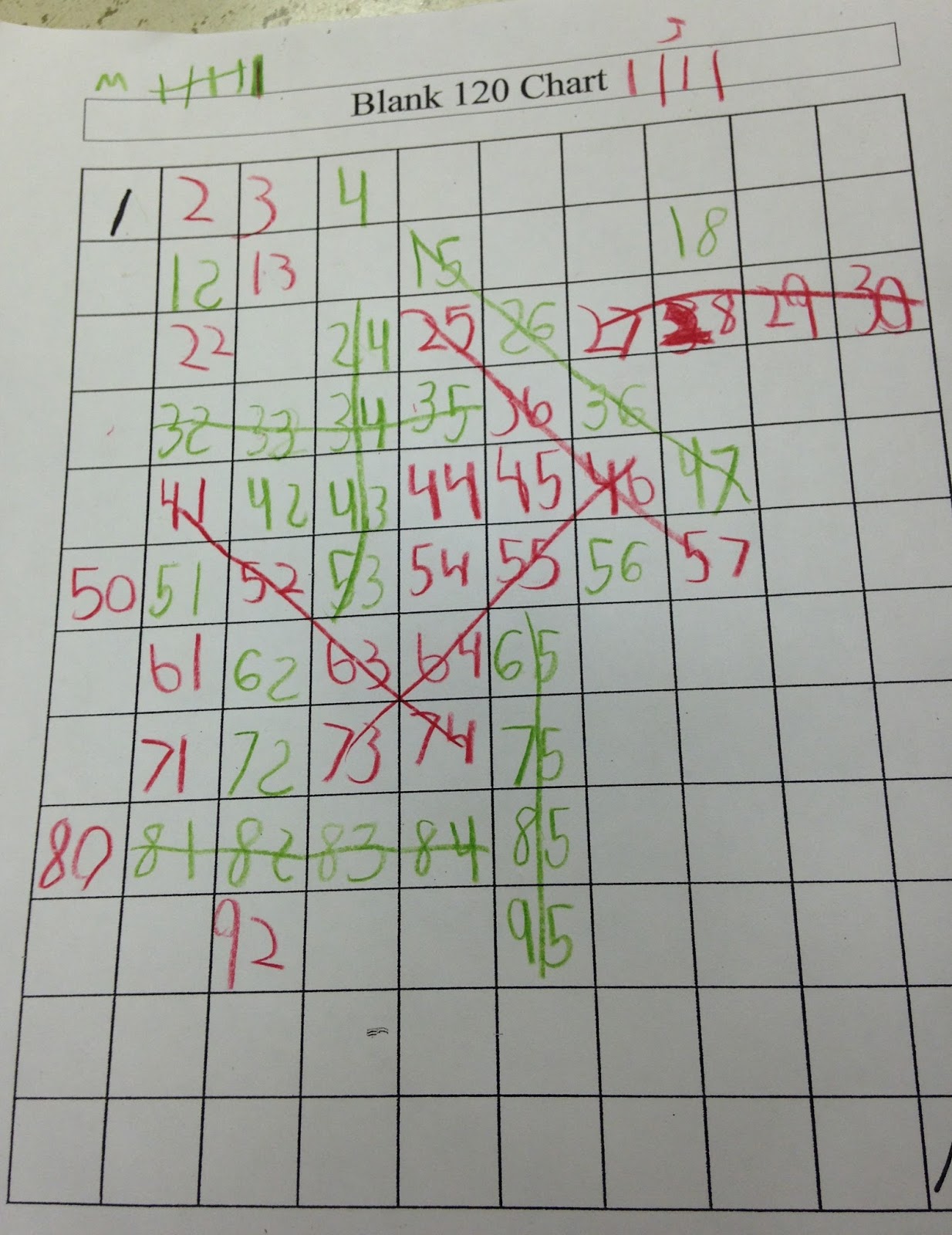Number Grid Tic-Tac-Toe
Players: 2 or 3
Ages: 6 and up
Cost: Free!
Math Ideas: Counting, Place value, 100s charts
Questions to Ask:
What numbers are "next" to your last move?
What if we started our chart with a different number? How would the game change?
This week's game is an invention by one of my favorite math teachers in the country: Joe Schwartz.
Joe has been writing beautifully about elementary math teaching for years at his blog Exit 10A. In fact, his writing was one of my first gateways into the wonderful world of early math.
Anyway, a few years ago he posted about a game he had invented called Number Grid Tic-Tac-Toe.
The second I read his post, I knew he was onto something special.
How to Play
Number Grid Tic-Tac-Toe is ideal for a 2nd grader, but if you've got a precocious younger kid at home, give it a shot! There are also some variations for older kids in the next section.
Print out a blank hundreds chart like the one linked here. Write 1 in the top left corner and 100 in the bottom right corner, but keep the rest blank.
You and your child each get a colored pencil or marker. Taking turns, you choose a blank square and write in the number that belongs in that square.
Whenever you get four squares in a row, either vertically, horizontally, or diagonally, you get a point. A square can only be used once to create a four-in-a-row. Once the whole chart has been filled, the player with the most points wins!
When I spoke with Joe, he said the game is pretty flexible, so feel free to switch up the rules.
For instance, you could introduce the game by playing a quicker game with the numbers from 1 to 50. If you have three players, Joe recommends scoring points with three-in-a-row rather than four-in-a-row.
Where's the Math?
This game is great for helping kids internalize the structure of the hundreds chart. This chart, which is a mainstay of elementary math, is a hugely important model for kids who are learning the base-ten number system.
For example, imagine your child wants to start the game near the center. They pick a promising square. How do they know what number to write in it?
Maybe they count the whole way there by ones. But more likely, they use the 10x10 grid structure to help them find a shortcut. Perhaps they count over to the correct column, then count down rows saying, for example, "7, 17, 27, 37, 47, 57!"
Or maybe they do the opposite, starting in the corner and counting down "1, 11, 21, 31, 41, 51" and then counting over once they reach the correct row.
The more flexible kids become with the hundreds chart, the more easily they'll be able to do mental math using these same structures. Want to do 56 + 19? Just hop down one row to 66 (adding 10) then hop down another row to 76 (adding another 10) then step back one space to the right to end at 75 (subtracting 1).
Believe it or not, those sorts of mental math tricks are far quicker for kids to compute in their heads if they have the visual structure of the hundreds chart as a scaffold.
If your child is a bit older, you can change up the game! Instead of starting at 1, start your chart at something like 601 or 231. For an even bigger challenge, pick a totally random number like 438 and make that the first number of your chart! Where would 500 be on a number grid like that?
Joe has seen students have fun playing variations that involve fractions (tenths, usually) and decimals (tenths again). One I really want to try uses a multiplication table instead of a number grid.
He even had kids playing a variation like Connect 4, where they pretended their moves were chips that fell to the bottom of each column as the played! I love that idea.
Questions to Ask
One of the hardest questions to answer is the one that starts the game: "Where do you want to play first? What number is that?"
Get your child to justify their work to help them sharpen their verbalization of math ideas. Don't forget to ask "How do you know?" as they fill in their numbers.
Let's say they start at space 55. An interesting question might be "What numbers are 'next' to your last move?" You and your child could have a conversations about what counts as "next." In what way is 45 next to 55? In what way is 46 next to 55?
If you want to play the more complex variation, then ask your kid "Pick a random number"and then use that as your starting point! You're sure to stumble upon some tricky math ideas and insights, even for adults.






